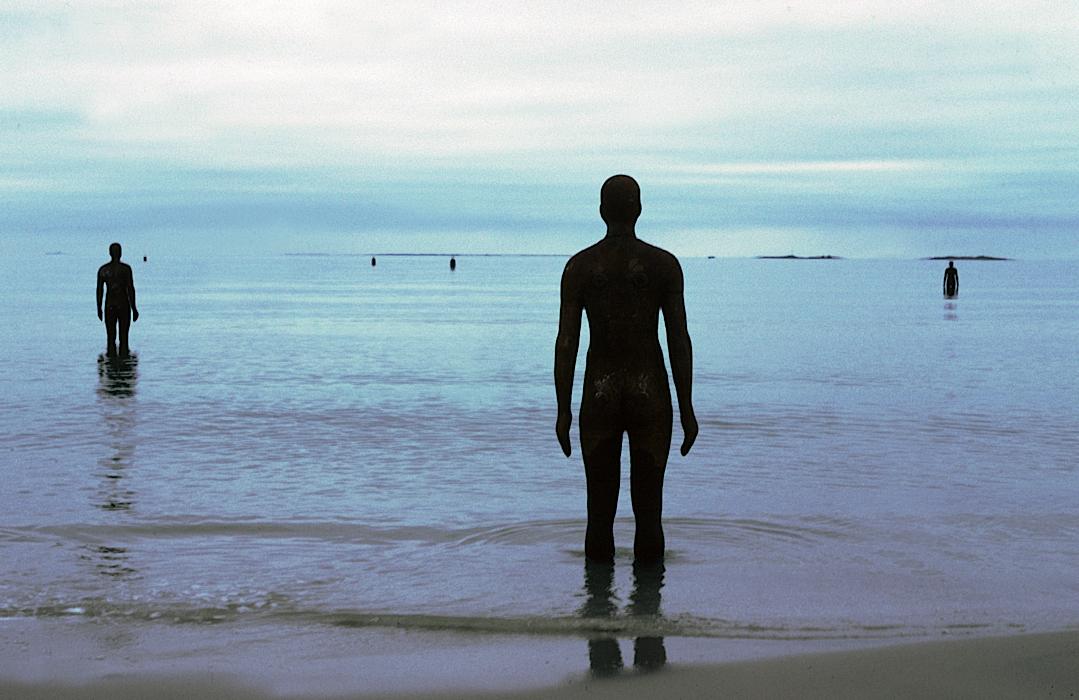It is worth noting that ephemerality in public art is not a new idea. Temporary artworks have and do occur in the public space – from the derivés and psychogeography of the Situationists, to more pointed performance works and happenings of the mid-20th century, continuing through graffiti and street art movements, and existing in current new-genre public art. There are several notable examples of successful temporary public projects both in Stavanger and abroad, discussed further below. On the whole however, there has been an unfortunate lack of consideration towards temporary public artworks in the municipal commissioning process. To that end, this text will focus primarily on sanctioned, commissioned public artwork that is financially supported from a source external to the artist – generally public funds.
Decisions about the planning and design of the urban environment are inevitable and necessary. Buildings by their very nature must be solidly built and enduring. Roads must be safe. City parks and squares must be maintained. Excitingly, it is in the area of public art that a more playful, experimental and ephemeral approach may be enjoyed.
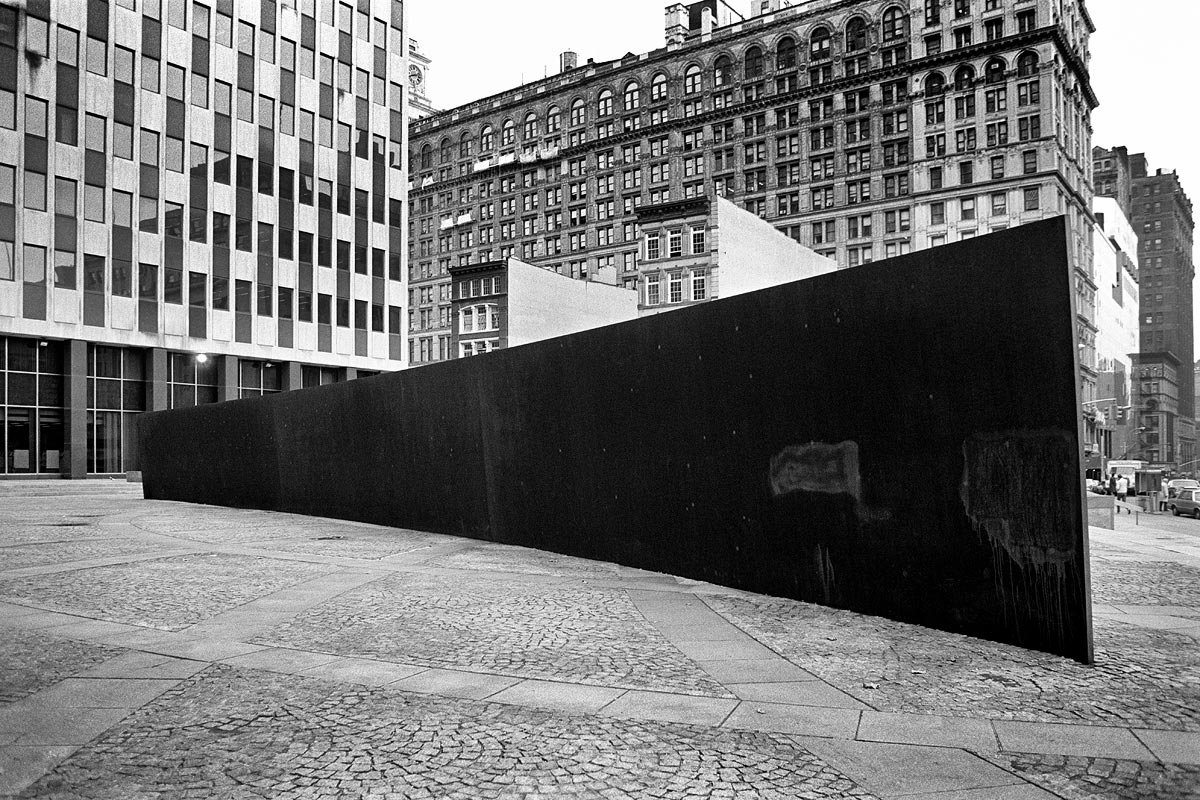
Against the Public
In 1981, American artist Richard Serra created the now infamous artwork Tilted Arc, an imposing artwork of unfinished steel. Standing 37 meters long and 3.7 meters high, the artwork bisected the heavily trafficked Foley Federal Plaza in Manhattan, dominating the square, dwarfing the public, and efficiently cutting off immediate access to buildings and services in the area. Where before citizens and visitors to the city could walk directly towards apartments, offices, and public transportation, they now had to walk circuitously around the artwork in order to reach their destination.
The disruption to the flow of public foot traffic was not an oversight on the part of the artist; it was in fact the very intention of the artwork. From an artistic standpoint, Tilted Arc was conceptually successful. The sculpture stood equal rather than subservient to the architecture surrounding it, and engendered an awareness of a space that was usually regarded as nothing more than a conduit through which to travel to somewhere else more important. Yet practically, the artwork proved highly problematic for the citizens forced to live and interact with it on a daily basis. After a multitude of petitions, meetings, heated arguments both for and against the sculpture and a consequent legal battle, Tilted Arc was removed from the plaza in 1989. Though certainly the concept of the ‘audience’ had been questioned previously, the uproar that ensued around Tilted Arc’s installation and removal perhaps most visibly brought to the fore the prevalent rift between artist and audience, particularly when dealing with artwork in the public space.
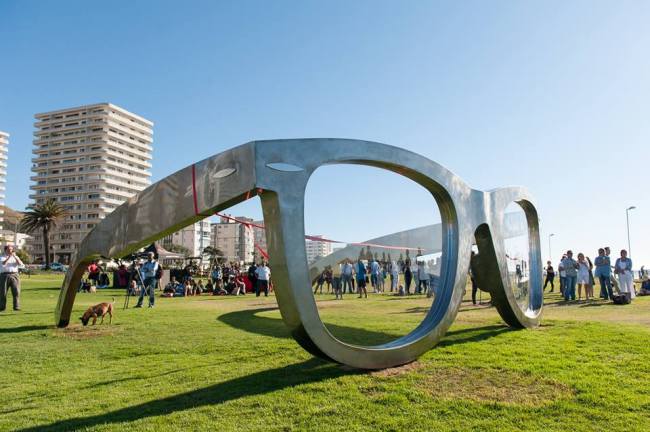
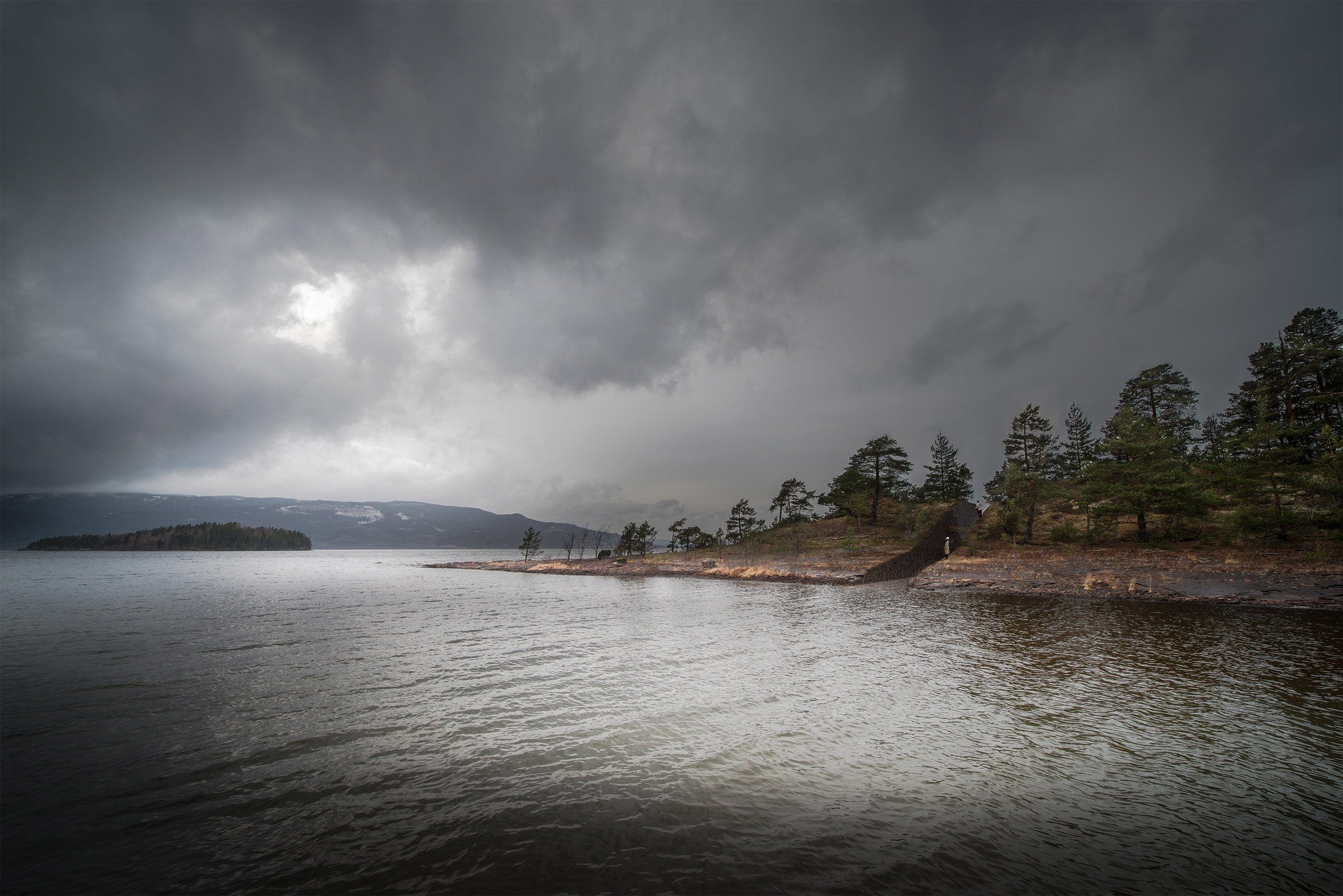

Examples of disagreements between artworks and the publics for which they were supposedly designed abound. For more recent examples, look to Cape Town’s controversial 2014 memorial to Nelson Mandela (a giant sculpture of Ray-ban sunglasses), the 2016 controversy over Jonas Dalhberg’s proposed project Memory Wound memorializing the tragic 2011 attack on Utøya, or the newly installed and hotly debated Fearless Girl on New York’s Wall Street, to list only a very few. In light of these conflicts, it is worthwhile to question what constitutes a successful public artwork. When much of contemporary art is meant to disrupt, unsettle, and problematize, what then should take precedence in the public space; the artist’s vision, the goals of the commissioners, or the desires of the people? 1
- This is not to say that the vision of the artist, commissioning body, and the members of a community are necessarily or perpetually at odds. However, when conflict arises, how should they be mediated and which agenda should take precedence?
Forever and Ever
It could be postulated that the majority of conflicts between artists/artwork, commissioning organizations, and the public stems from a deep-seated misunderstanding of terminology and disagreement about goals. What characteristics define a public artwork? Even more importantly, whom does the term ‘public’ signify? Is there more than one ‘public’ and if so, for which group is an artwork created? Finally, do we misconstrue the term ‘public art’ with the idea of the monument/memorial, and thus unwittingly make permanence a requisite for the commissioning of public artworks?
Linguistically speaking, the word ‘public’ denotes something exposed to general view (as opposed to private), a community of people defined within a specific context (usually geographical or conceptual), and/or an entity supported by public funds. Further, the concept of ‘public space’ in the context of art is defined by Stavanger Kommune as: “outdoor areas for public streets, squares, docks, parks and recreation areas in the city center and surrounding districts.” Included in the idea of public art, the municipality also lists guidelines for the commissioning of artworks for municipal buildings and institutions such as “schools, kindergartens, nursing homes, assisted living facilities and service buildings.” 2
- http://www.stavanger.kommune.no/no/Politikk-og-demokrati/Styringsdokument/Reglement-/ Note that this text has been translated into English from the original Norwegian: “Ordningen gjelder kulturbygg, skoler, barnehager, kirker, bydelshus, idrettsanlegg, sosiale institusjoner, boliganlegg og administrasjonsbygg.”
Regarding the selection of public artworks, Stavanger Kommune states that, “art in Stavanger’s outdoor public spaces shall be of high artistic quality. It will emphasize artistic variety, diversity and innovation. Stavanger wants a wide range of professional Norwegian and international artists to be represented.” 3
- http://www.stavanger.kommune.no/no/Politikk-og-demokrati/Styringsdokument/Reglement-/ Footnote: Note that this text has been translated into English from the original Norwegian: “Kunst i Stavangers offentlige uterom skal ha høy kunstnerisk kvalitet. Det skal legges vekt på kunstnerisk variasjon, mangfold og nyskaping. Stavanger kommune ønsker at et bredt spekter av profesjonelle norske og internasjonale kunstnere skal være representert.”
These stated goals are to be lauded: high quality, diversity, innovation, wide representation. Nowhere does it state that public artworks must exist for any specified amount of time.
Returning briefly to the example of Tilted Arc, renowned American artist Jimmie Durham and his partner Maria Thereza Alves were the only professional artists among the many people who protested Serra’s artwork in the 1980s. In a 2012 interview in Frieze, Durham expressed his strong views on the problems of public art, particularly permanence:
“I think public art is always a strange idea... To put something in the public sphere as art that stays there every day is invasive, it’s stupid and it’s only public in the sense that it’s against the public – that the public have been suckered and sold something. When I was in London several years ago, they were running a programme called ‘Poems on the Underground’ [1986–ongoing], in which beautiful poems featured on the tube. That’s public poetry, but it is not someone on the street corner blasting poetry though a loud speaker, is it? You don’t have to read it. On the other hand, you must walk around the Serra piece. You must be oppressed by bad sculpture that sticks out there forever and ever.” 4
- https://frieze.com/article/various-elements
It is in the phrase “forever and ever” that the concerns about the permanent capturing, dominating even, of a public space are illuminated. Perhaps it is not necessarily the unsettling nature of an artwork, but rather the perpetuity of its existence that so enrages communities as in Tilted Arc. Permanent artworks can create a captive audience, one that cannot escape and, save moving, have no choice but to encounter an artwork again and again as they go about their lives, engendering feelings of disenfranchisement and disempowerment. The reaction against this kind of intrusive public art is much akin to the way that citizens might organize and revolt when their line of site is threatened with the blight of the golden arches of a McDonald’s sign, billboard advertisement, or an immovable new high-rise apartment building. In short, I would argue that citizens are largely not against public artwork per se, but rather wish to exercise greater agency in their own aesthetic environments. However human nature ensures that, with so many actors to consider in the commissioning and creation of public art, disagreements will abound. How then can these differing goals, opinions, and aesthetic preferences be mediated?
Within Stavanger, public artworks are commissioned via a committee of politicians and consulting art advisors. At least three proposals for projects are requested at the behest of the committee and accompanying art professionals, and both the artistic message of the artist and the possible effects on the surrounding community are taken into account. The valiant attempt of the commissioning process to consider both the vision of the artist and the citizens that the artwork will affect is admirable. However I would argue that the commissioning and creation of art by consensus is problematic and rarely produces results that are satisfying to all parties. Furthermore, the use of the word ‘utsmykkingsprosjekt’ – decoration project – by the municipality in regards to the commissioning of public art in municipal spaces connotes the sublimation of artwork to architecture, an afterthought to a pre-determined structure. In this scenario, artwork suffers the threat of becoming a watered-down version of the artist’s original intent, a decorative flair added to public buildings and courtyards, or conversely, a controversial and disliked obtrusion in the community. It is a rare work of public art that is able to both retain its strength of voice and please the public.
Here it may be useful to pause and consider the definitions of monument and memorial. It is the express goal of the monument to remind, renew or keep fresh the memory of a specific, real event, persons, or heritage. To fulfill this purview, memorials strive to be permanent. Cities the world over are replete with statues of men on horses, mythical figures, and commemorative busts carved in stone or cast in bronze. Perhaps the ubiquity of these sculptures causes the melding in many minds of the ideas of public art and permanence. The goal of the broader genre of “public art” is more vague and difficult to pin down. 5
- : The term can encompass relational art, land art, new genre public art, new media and expanded cinema, performance art in the public space, activist and community-based projects, to name only a few.
However rather than a detriment to the commissioning of public art, it is precisely this open-endedness that gives art in the public sphere the agility to respond to contemporary issues as needed. The monument (and its format, the permanent sculpture), while closely allied with public artwork, does not encompass all possibilities of public art, and thus its strictures, particularly in regards to permanence, should not be placed on potential future public works. 6
- As a side note, political questions of who and what is chosen to be memorialized is a separate matter, though crucial to investigate and problematize in our current age. I am wholly supportive of memorials that unsettle and force an uncomfortable consciousness or confrontation – see Edgar Heap of Birds public artworks Building Minnesota (Walker Art Center, 1990) and Most Serene Republics (Venice, 2007) as examples. Conversely, sometimes the removal of public monuments originally meant to remain in perpetuity is also necessary as in the case of the recent removal of the statue of Confederate General Robert E. Lee in New Orleans, among others.
So then, if public art is elevated from the mere decoration of pre-existing spaces and differentiated from limited notions of permanence (be it statuary, installation, painting or new media), a multitude of possibilities for public projects suddenly emerges. When approaching the creation of new artistic public projects, we might now consider the commissioning of temporary or ephemeral works as a more truly egalitarian approach.
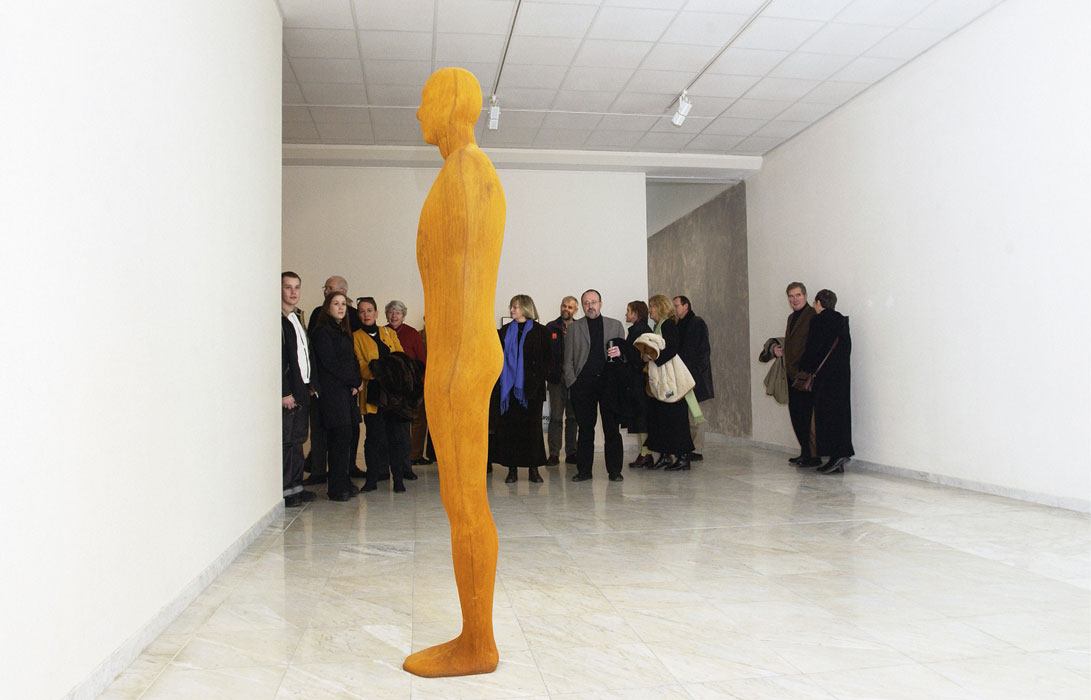
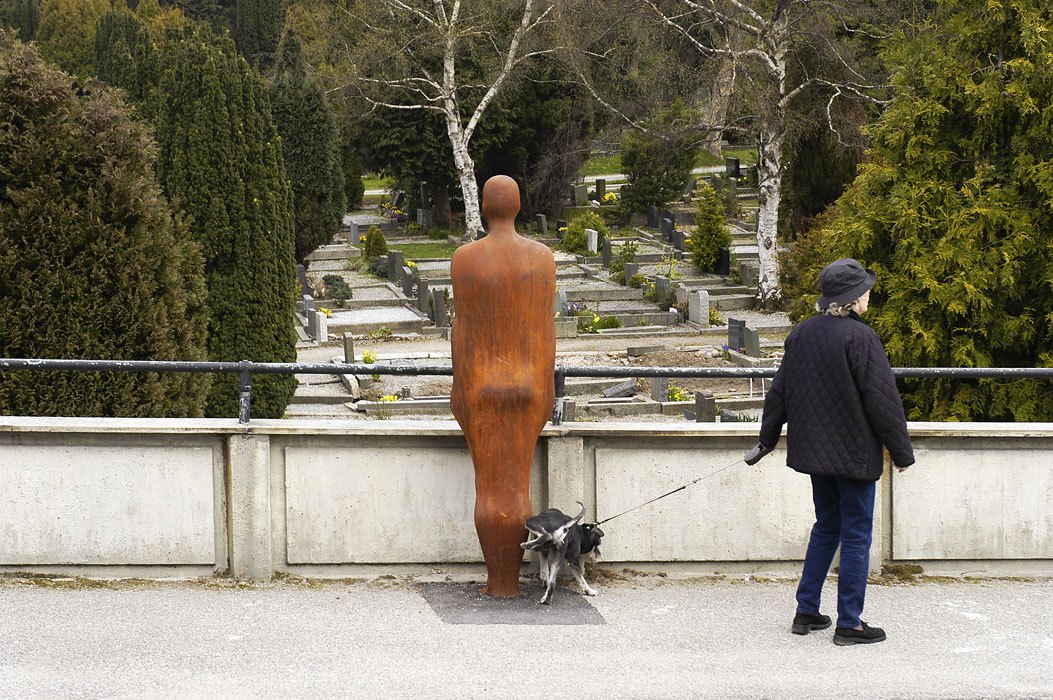
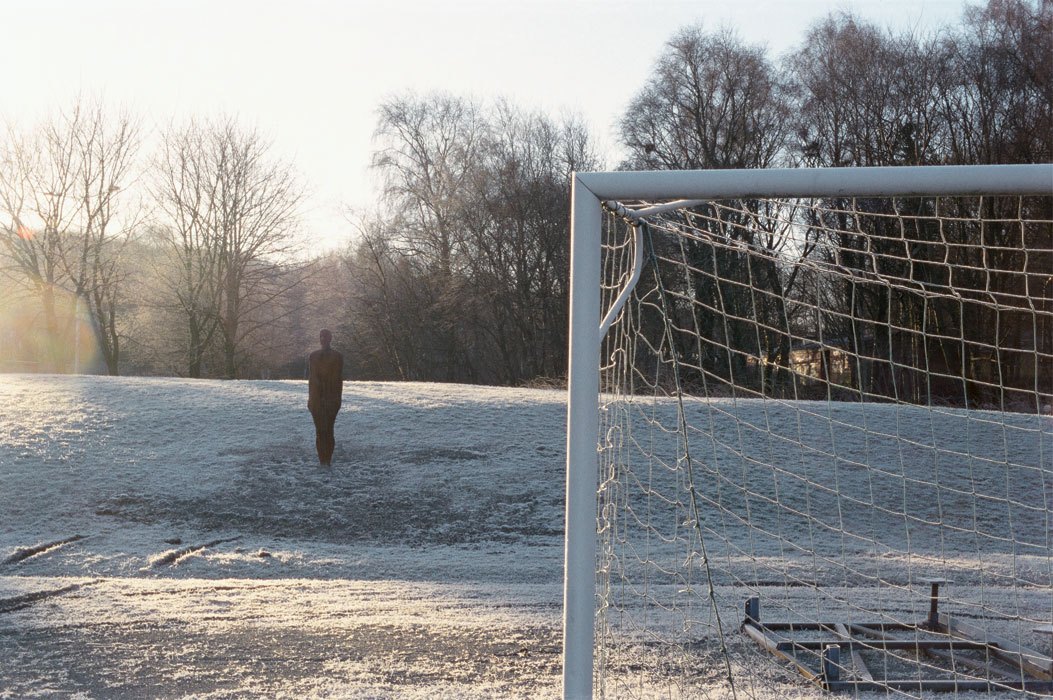
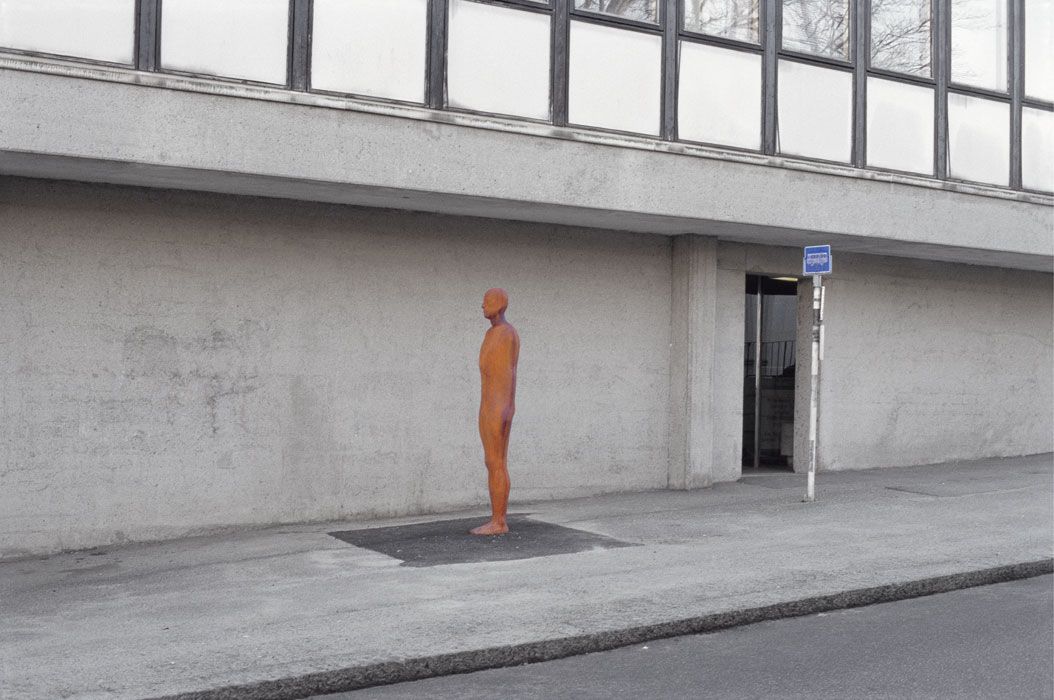
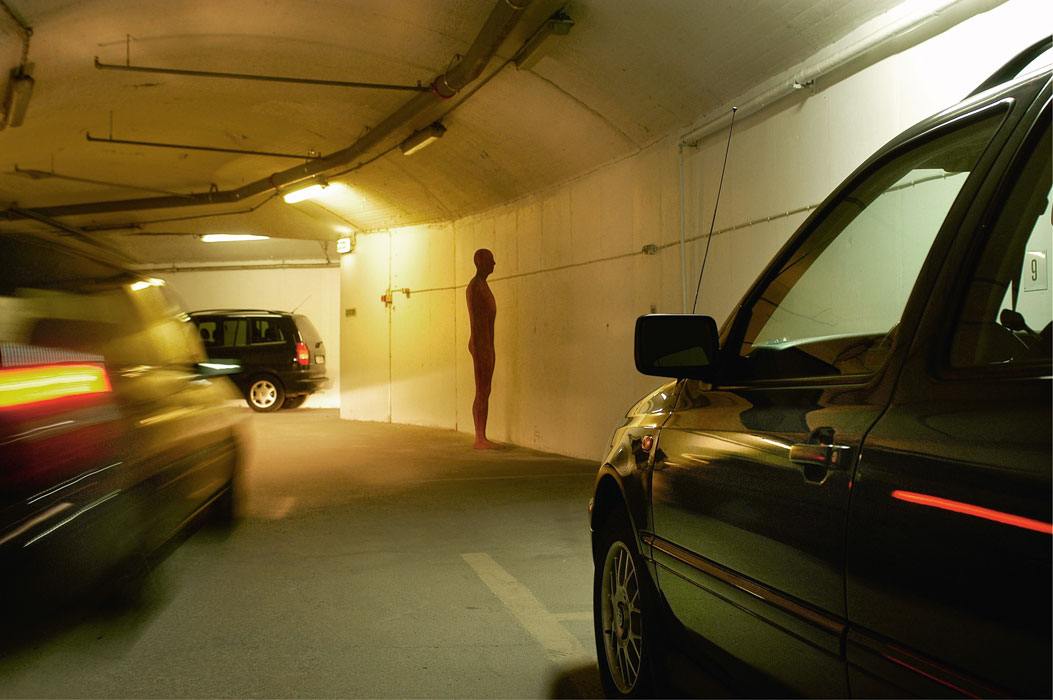
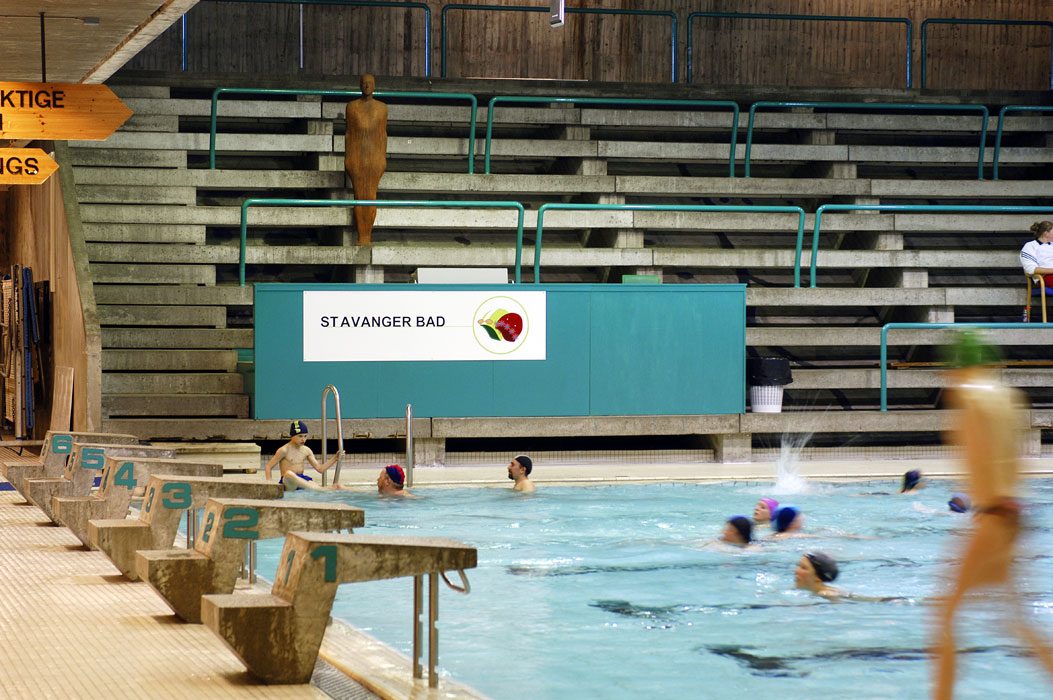
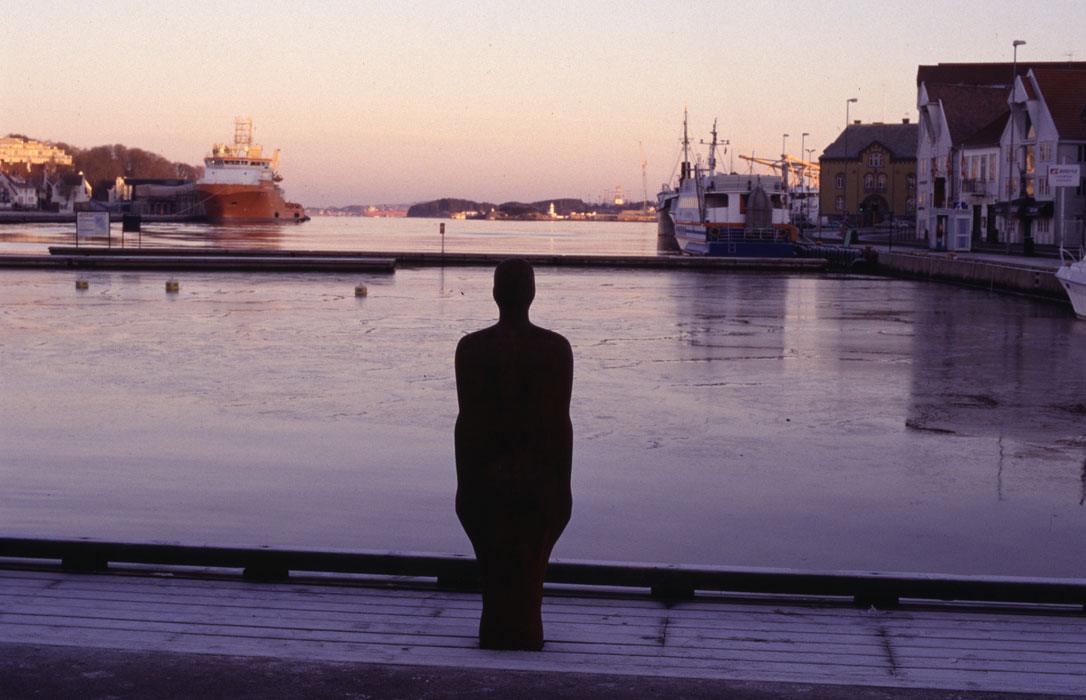
Public Poetry
Of all public artworks in Stavanger, perhaps most widely known and easily recognized is Broken Column (2003) by British artist Antony Gormley. The artwork as a whole is comprised of 23 statues of sandblasted iron, individually and permanently installed in various locations around the city. The sculptures are of an amorphous human body, lacking any specific identifying features, and although they are installed at different heights, each sculpture represents a body 1.95 meters in height. The body forms are placed throughout the city from the Art Museum to the Stavanger harbor, and as the title suggests, form a displaced column with the head of each sculpture connecting (in height) to the foot of the next. All of the sculptures face the sea, eight degrees west of true north. Unlike many other public statues in the city, this artwork doesn’t memorialize any specific person but rather attempts to encourage an encounter of the city from different perspectives.
“I think of them as uninscribed objects; they don't memorialise anyone in particular. Each one simply identifies a human space in space and shifts attention from the intrinsic qualities of the sculptures to the context that contains them.” –Antony Gormley 7
- http://www.antonygormley.com/projects/item-view/id/251
Although widely lauded as a successful public artwork, the sculptures are also the victims of vandalism, require continual maintenance, and perhaps most importantly, quickly become part of the recognizable urban environment, thus negating the original intention and success of the artwork.
Perhaps a more interesting public project to consider is the similar, but temporary, artwork Another Place (1998) by the same artist. Following the artwork’s initial presentation in Germany, the 100 body-form sculptures then traveled to Sola Beach in Stavanger where they were displayed from June 7 – September 7, 1998. The installation sprawled from the tarmac of Sola Airport to the sea, crossing the fence between private and public property. About the artwork, Gormley states:
“The 100 sculptures were installed at Sola Beach where the works occupied part of the airport, which with its fence becomes an analogue for all boundaries, between people and elements, and more importantly an example of the controlling devices of commerce.” –Antony Gormley 8
- http://www.antonygormley.com/show/item-view/id/2351/type/solo#p2
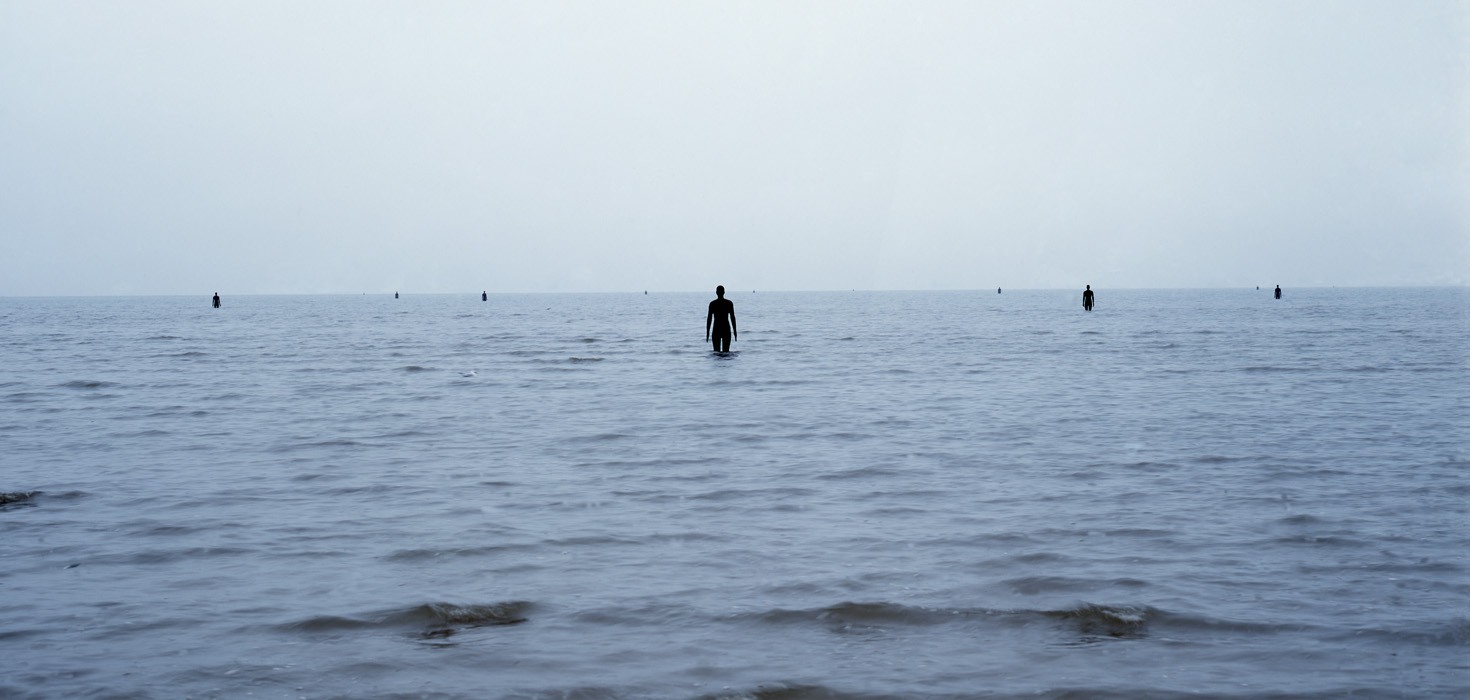
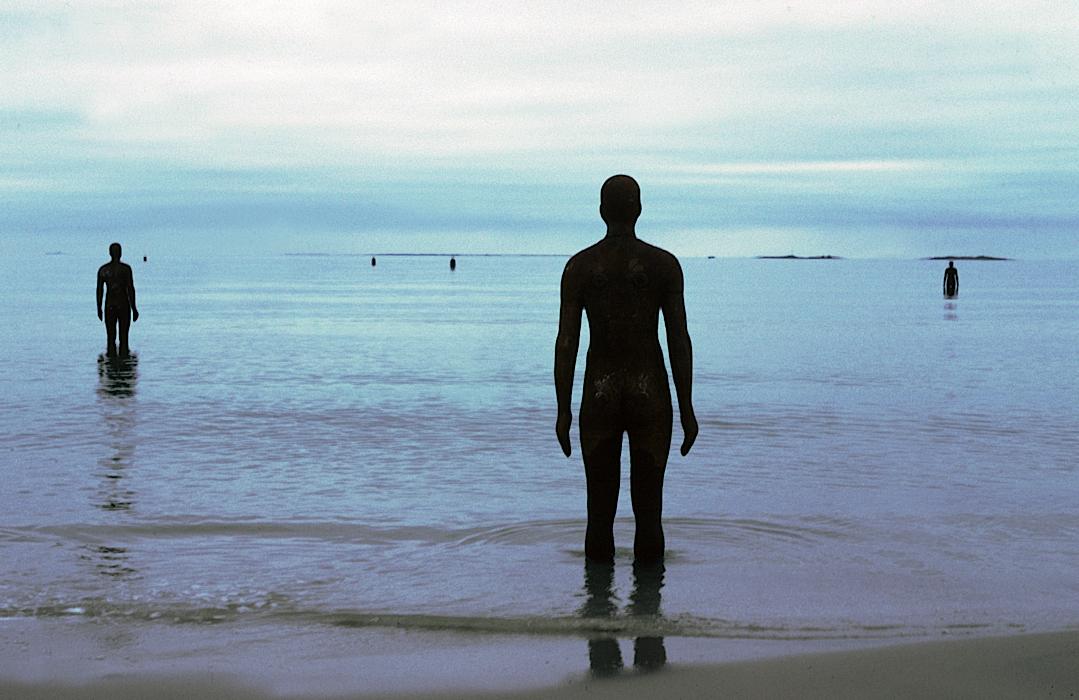
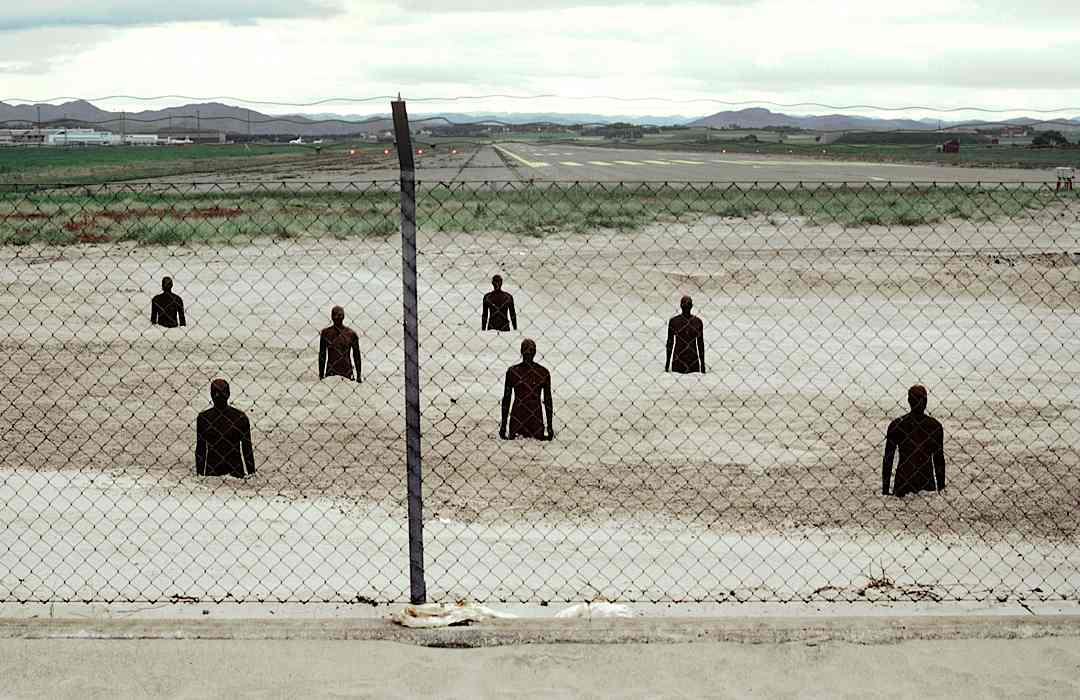
It is a widely accepted principle that scarcity creates value, that impermanence engenders appreciation. This applies not only to a number of physical objects available, but also in regards to time. Available to be experienced for only three months, perhaps Another Place was more conceptually successful for its impermanence?
We can also look to other notable publically commissioned ephemeral artworks as possible templates. As an outspoken critic of public artwork as a whole, Durham himself has created several public works with a caveat of temporary installment. His work Pagliaccio non son (2011) was commissioned as part of KölnSkulptur#6. Installed for a period of two years only, the work consisted of a full tree trunk imported from the Congo. Rescued from its destiny to become veneer for furniture, the African species of tree installed on its side in a public park in Cologne, Germany, created a subtle representation of the artist as foreigner. In addition, the use of wood rather than stone ensured the impermanence of the work. 9
- http://www.skulpturenparkkoeln.de/de/ausstellungkoelnskulptur/koelnskulptur-6/19/199.html?ausstellungsview=1
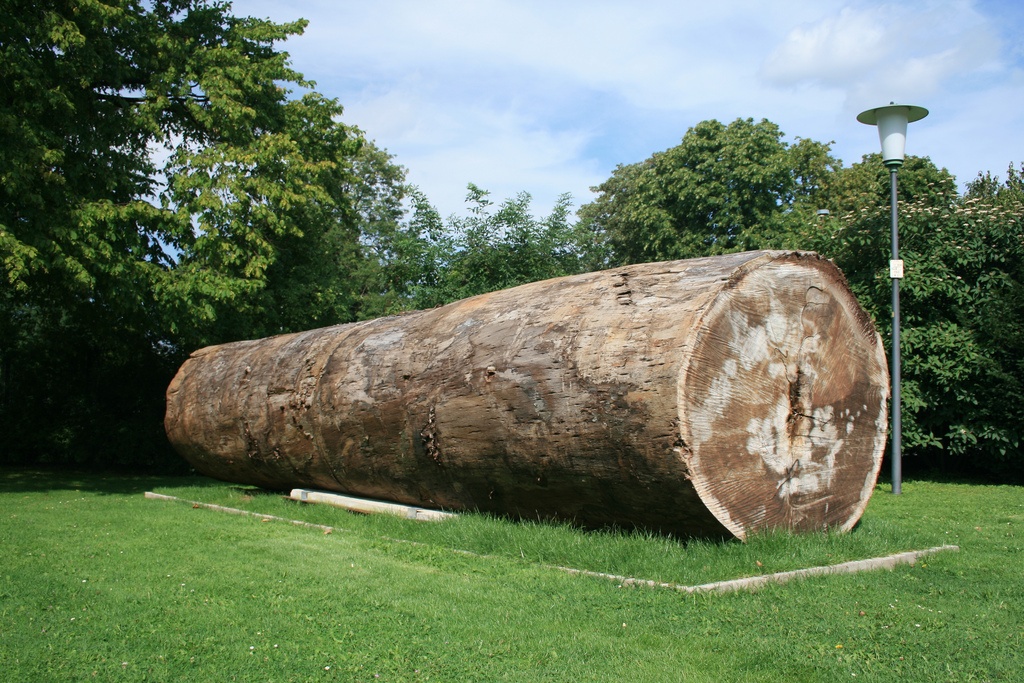
New York’s Creative Time offers yet other examples of temporary public artworks including Tribute in Light, a memorial for the 9/11 attacks all the more powerful for its impermanence, and Paul Chan’s staging of Waiting for Godot in New Orleans, an on-site performance in post-Katrina New Orleans, to name only a few. 10
- For a full list of Creative Time’s projects, visit: http://creativetime.org/

Within Scandinavia, Public Art Agency Sweden (Statens konstråd) has become a leader in the commissioning of site-specific, temporary interventions in the public space. In artist Myriam Lefkowitz’s work Walk, Hands, Eyes (Gamlegården) (2016), participants are guided through a blindfolded walking tour of the Gamlegården residential area of Kristianstad. Similarly (Labor Monument) (2015) by Alexandra Pirici memorializes the bodies of workers at the edge of post-industrialization through a performative ritual rather than a permanent statue. Further, this intangible public artwork has been purchased for the Statens konstråd Collection, and has been performed in several locations in Sweden. 11
- For a full list of Public Art Agency Sweden’s temporary projects, visit: http://www.statenskonstrad.se/en/konst?konst-kategori=tillfalliga-projekt
Closer to home, several Norwegian institutions have included temporary public works as part of their programming. The Munch Museum’s recent series of contemporary art projects in Oslo, curated by Natalie Hope O’Donnell as part of Munchmuseet on the Move, seeks to form relationships with community members as it moves from Tøyen to its new premises in Bjørvika. The series commissions new works in collaboration with partner institutions and public spaces including Sofia Hultin’s I’m Every Lesbian, a walking tour of Oslo’s queer histories, and Footnotes, an audio guide through old town Oslo by Jon Benjamin Tallerås that highlights forgotten or overlooked parts of the city scape. 12
- Munch Museet on the Move is a temporary project running from 2016–2019. For a full list of contemporary art projects as part of Munch Museet on the Move, visit: http://munchmuseet.no/en/munchmuseet-i-bevegelse
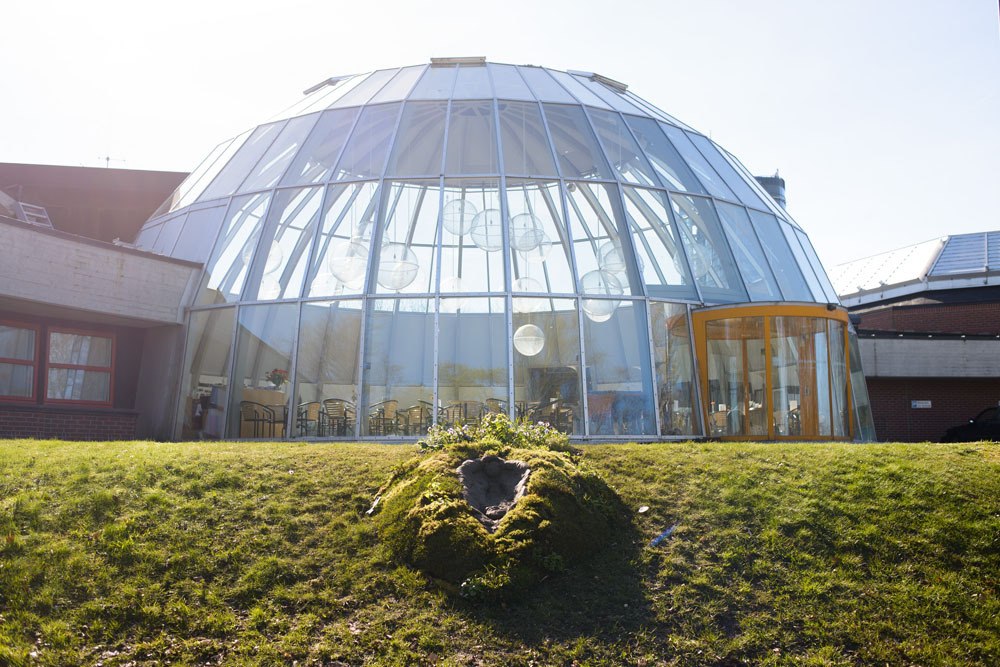
Here in Stavanger, Stavanger Kunstmusem’s commission of Easy Physical Navigation, Transplanting Pit (2015) by Siri Borge, Hans Edward Hammonds and Kerstin Juhlin allowed for a contemporary, conceptually provocative artwork to be created and installed in the lawn directly outside of the museum for five days. And for several months during the summer of 2014, the temporary public sculpture Dans! by Else Leirvik, initiated by Prekubator TTO and curator and CAS editor Marte Danielsen Jølbo, stood prominently in Stavanger’s harbor.
These examples not only demonstrate a burgeoning interest in temporary public projects but also provide successful templates for municipalities to consider when commissioning new public artworks. The ephemerality of these artworks present a solution to the often divisive nature of public works; one in which the citizens of a city are not forced to endlessly endure a public artwork that displeases them, nor are artists required to weaken their message or have their artwork relegated to the realm of decoration. Actionable steps towards this goal include the engagement of a larger variety of professional voices in the commissioning process, as well as the active pursuit of perspectives from the community in order to incorporate their desires and mitigate their concerns. Whether they be unobtrusive artworks that do not force an audience such as audio tours or performative works, or more disruptive and confrontational projects that work within a set time frame, energy should be spent to encourage, identify, and fund public works of a temporary or ephemeral nature.


